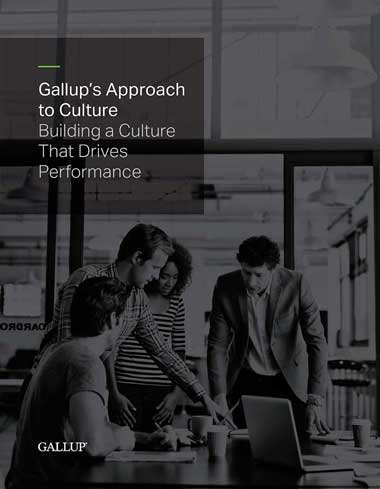Story Highlights
- Organizations have and are making ESG promises; expectations are high
- Rising expectations without rising capability will lead to unmet promises
- Data suggest customer resignations will be the result of unmet promises
Global corporate citizenship is paramount in the modern workplace: Everyone -- investors, employees, customers and governing bodies -- expects transparency and progress on DEI, ESG, wellbeing, mental health, sustainability and other social responsibility measures. In response, leaders have recommitted to benevolence beyond return to shareholders and are pumping resources into activity and reporting to prove their dedication.
For a time, these sizable investments can build brand equity. But with each activity, with each investment, organizations are making promises to their stakeholders. As the promises mount, expectations rise. Rising expectations without rising capability can lead to disaster -- in fact, a credibility crisis is already here.
In 2020, the percentage of employees who strongly agreed that their organization cared about their overall wellbeing surged to 49% as organizations made material commitments to do their best to take care of employees.
Two years later, as capability failed to catch up to commitment, the number of employees who believe their organization actually cares about their wellbeing plummeted to a record low: Just 24% of employees strongly agree today.
These disappointed employees are walking -- as evidenced by the Great Resignation. Customers are next. When customers are actively disengaged and don't believe you deliver on your promises, the result is a 19% decline in business outcomes, on average.
To avoid the Great Customer Resignation, leaders need to take three important steps to build necessary capability:
- Define what matters most to who you are as an organization.
- Measure what matters most.
- Change what matters most.
Define what matters most to who you are as an organization.
Customer retention comes from a clear and authentic purpose that distinguishes you from the competition. A purpose that's unique to your organization communicates to the world how your company makes a difference like no other brand can. Clarity and specificity also help employees align their goals and behaviors with brand promises. In turn, the world perceives an organization that follows through -- a brand they can depend on to do what it says.
As the promises mount, expectations rise. Rising expectations without rising capability can lead to disaster -- in fact, a credibility crisis is already here.
A common mistake leaders make is defining a purpose in a boardroom, rather than aligning a purpose to employees' and customers' perspectives. Leaders should listen first to key stakeholders through various sources, such as Voice of Customer insights and employee focus groups. The goal is to discover the values and beliefs that matter most and use stakeholder language that will resonate best with those ideals.
With that perspective, you can craft a specific, authentic purpose that communicates the difference your organization makes, how your company provides that value (your unique capabilities) and the customers you serve. The outcome is a purpose that resonates on an emotional, human level -- a purpose that customers connect with and employees feel proud of.
Measure what matters most.
Next, leaders need evidence of how they're fulfilling their purpose. There are countless metrics to track, but metrics that assess the progress of your organization's purpose are differentiated from competitors' standardized reporting and deserving of people's time and money.
Leaders should use focused metrics to assess how effectively their culture is furthering their purpose. Outcomes-based metrics will reveal the smartest strategies and goals for closing the gap between aspiration and reality -- the incremental changes that will bring your capability to the level of your commitments.
For instance, in Gallup's culture change work with clients, workplaces often find room for improvement in their accountability practices. Through diagnosing such gaps, leaders can make incremental changes that address their workplace's needs, such as ensuring performance incentives match your purpose and brand promises.
The best leaders use comprehensive metrics to gain the full picture of how well their culture keeps its promises -- from internal culture audits to data about their global impact.
Change what matters most.
Lasting culture change cannot happen without the right manager capability and accountability. Managers spread enthusiasm for your purpose and teach employees what "excellence" looks like. The messages managers convey, from incentive pay to top priorities, determine whether employees' actions and capability are boosting -- or undermining -- your credibility with customers.
To fulfill this responsibility, managers need proven development. Trained managers can coach employees to point every task toward your purpose, creating a culture that does what it says. They can also inspire employees by showing them why their contributions make a difference.
Your organization is telling a story to the world about what it values, why it exists and who it serves. A story sufficient to attract and retain customers has to be distinctive and purpose-driven. And the believability of your story hinges on your culture -- what you do individually and collectively.
When the expectations of your story are one-of-a-kind and you do the hard work of defining, measuring and changing to build the cultural capability to deliver, the world will see a credible, inspiring brand that deserves its ongoing loyalty. For all others, the Great Customer Resignation is next.
Create a culture that delivers for your customers.
- Learn more about how culture drives your purpose -- and your brand.
- Discover how a strong culture can drive performance.
- Partner with Gallup to help bring your organization's values to life.




